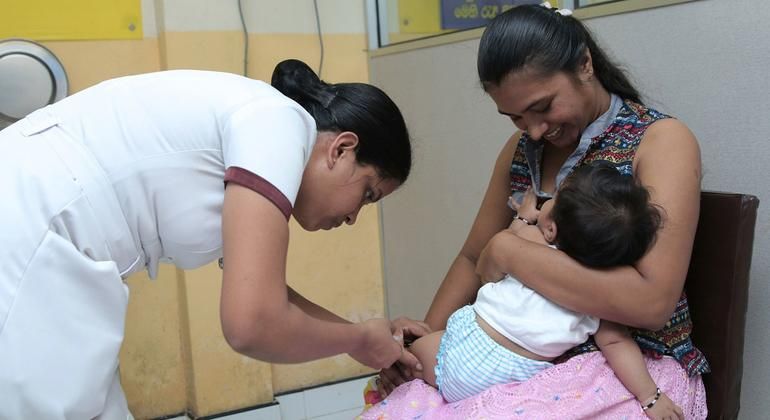The disease is the second infectious cause of death worldwide, with 1.3 million deaths per year, the same as tuberculosis, another of the main causes of infectious death, according to the World Hepatitis Report 2024 of the World Organization of Health (WHO).
“This report presents a worrying picture,” said WHO Director-General Tedros Adhanom Ghebreyesus. “Despite global progress in preventing hepatitis infections, deaths are increasing because very few people with hepatitis are being diagnosed and treated.”
Quick course correction
Although better tools for diagnosis and treatment are available and product prices are declining, testing and treatment coverage rates have stagnated, the U.N. health agency said in the report, released at the World Summit. about Hepatitis.
But it should still be possible to reach the WHO's 2030 elimination target if quick action is taken now, the agency said.
“WHO is committed to helping countries use all the tools at their disposal (at affordable prices) to save lives and reverse this trend.”said the head of the UN health agency.
The waiting room of a health clinic in Rwanda. Hepatitis B vaccine coverage with birth doses is only 45 percent globally, with less than 20 percent in the WHO African region.
Increase in deaths
More than 6,000 people are being infected with viral hepatitis every day, according to the report.
New data from 187 countries show that the estimated number of deaths from viral hepatitis increased from 1.1 million in 2019 to 1.3 million in 2022. Of those, 83 percent were caused by hepatitis B and 17 percent by hepatitis C.
Updated WHO estimates indicate that in 2022, 254 million people will be living with hepatitis B and 50 million with hepatitis C. Half of the burden of chronic hepatitis B and C infections occurs among people aged 30 to 54 years, and 12 percent among children. Men account for 58 percent of all cases.
Gaps in diagnosis and treatment
Across all regions, only 13 percent of people living with chronic hepatitis B infection had been diagnosed and about three percent, or seven million, had received antiviral therapy by the end of 2022, well below targets. worldwide to treat 80 percent of cases. people living with chronic hepatitis B and hepatitis C by 2030.
The burden of viral hepatitis also varies regionally. The WHO African Region accounts for 63 percent of new hepatitis B infections; However, despite this burden, only 18 percent of newborns in the region receive the hepatitis B vaccine at birth.
In the Western Pacific region, which accounts for 47 percent of hepatitis B deaths, treatment coverage is 23 percent among people diagnosed, too low to reduce mortality.
Furthermore, despite the availability of affordable generic medications for viral hepatitis, many countries are unable to acquire them at these lower prices.

In Chile, new hepatitis treatments mean that around 98 percent of patients make a full recovery.
Eradicate the epidemic
The WHO report outlines a series of actions to promote a public health approach to viral hepatitis, designed to accelerate progress towards ending the epidemic by 2030.
include expand access to testing and diagnosisstrengthening prevention efforts in primary care and moving from policy to implementation for equitable treatment.
But financing remains a challengethe agency said, with current levels insufficient to meet needs.
The WHO said this arises from a combination of factors, including limited awareness of cost-saving interventions and tools and competing health priorities.
The new report also highlights strategies for countries to address these inequalities and access tools at the most affordable prices available.
- Promote mental health and well-being and strengthen substance abuse prevention and treatment.
- Reduce the number of deaths and illnesses from pollution, pollution and tobacco.
- Achieve universal health coverage and provide access to essential and affordable vaccines and medicines.
- Reduce the global maternal mortality rate to less than 70 per 100,000 live births and under-five mortality to at least 25 per 1,000 live births.
- End the AIDS, tuberculosis and malaria epidemics and combat hepatitis and other communicable diseases.
Sustainable development depends on ensuring healthy lives and promoting well-being at all ages.













